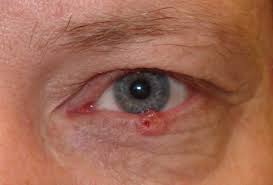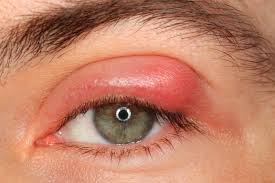Eyelid Growths
Eyelid Skin Cancer
 Basal Cell and squamous cell carcinomas are the most common types that appear around the eyes. They can present as a painless nodule or a crusting sore that won’t heal.
Basal Cell and squamous cell carcinomas are the most common types that appear around the eyes. They can present as a painless nodule or a crusting sore that won’t heal.
They tend to enlarge locally and rarely spread to other parts of the body. Left untreated they continue to grow and invade surrounding structures. Early surgical treatment to remove them completely while maintaining a minimally invasive technique is optimal.
Melanoma is a less common but more serious form of cancer. It may present as a mole that bleeds or can suddenly change shape and size. Sebaceous gland carcinoma is also a more serious form of cancer that forms in the oil glands of the eyelid. It may present as a thickening of the eyelid or persistent inflammation. Both melanomas and sebaceous cell carcinomas can spread to other parts of the body, and a more aggressive treatment plan may be necessary.
Causes
Excessive sun exposure is the single most important factor associated with skin cancers of the face. Risk factors include fair or light skin, a family history of skin cancer, a personal history of skin cancer, smoking, and age.
Surgical Removal
Surgical intervention is the most effective treatment for eyelid skin cancers. It involves complete removal of the lesion and reconstruction if necessary. Most often, this surgery is performed on an outpatient basis, using local anesthesia with sedation. Recurrence is rare, but may occur even after a complete excision; additional surgery may be indicated.
Stye/Chalazion
A stye or chalazion is a small, non-infectious bump that develops in the upper or lower eyelid due to the blockage of the oil glands in the eyelid. These oil glands produce fluid that contributes to the tear film that lubricates the eye. When the duct that drains a gland is blocked, the fluid becomes backed up inside the gland and forms a stye or chalazion. It presents as a red, painful lump near the edge of the eyelid that may look like a boil or pimple
Treatment
A stye or chalazion will generally resolve on its own, but this may take up to three months. If a quicker resolution is desired, treatment options include:
- Warm compresses
- Antibiotic/ steroid agents
- Steroid injection
- Surgical drainage

